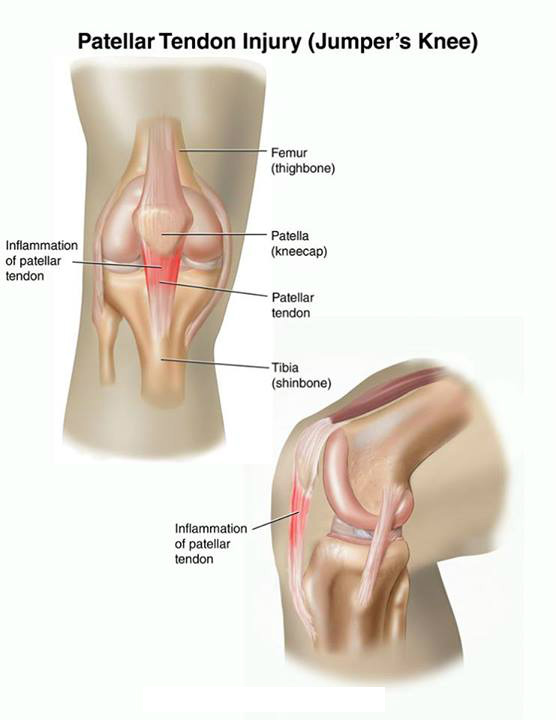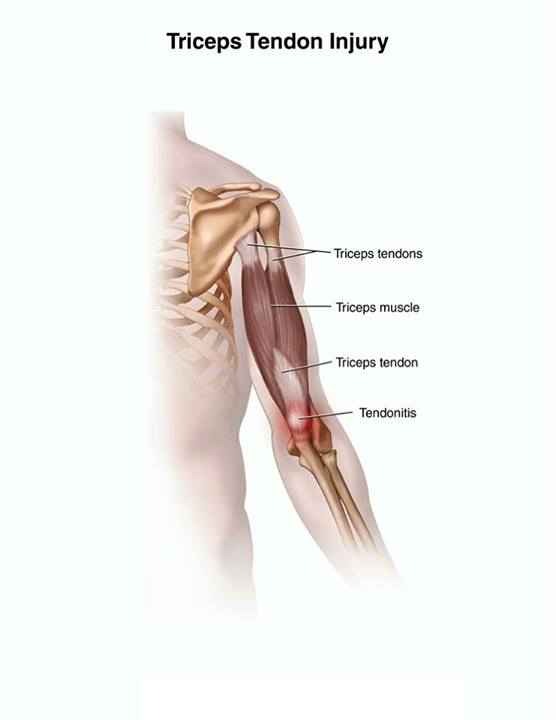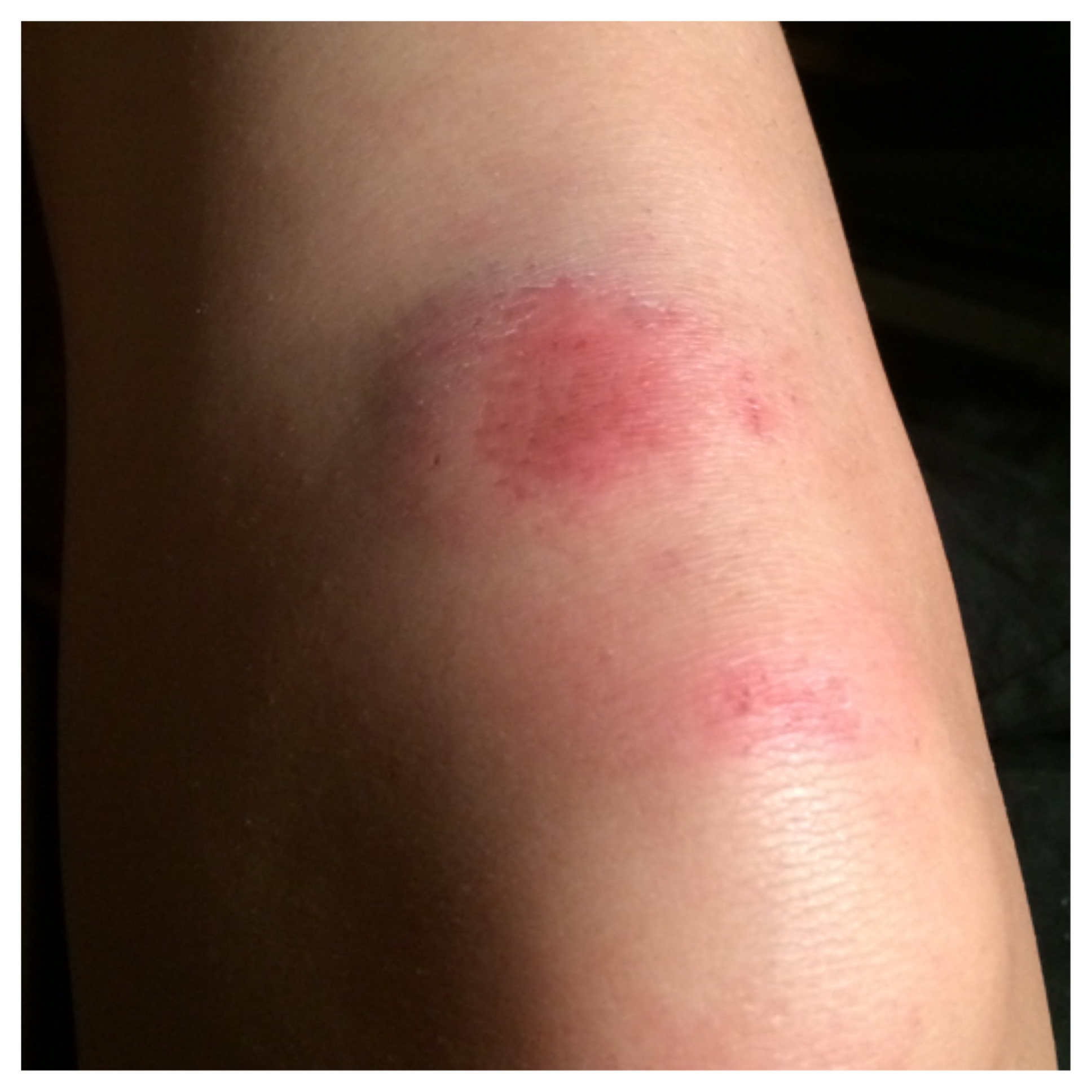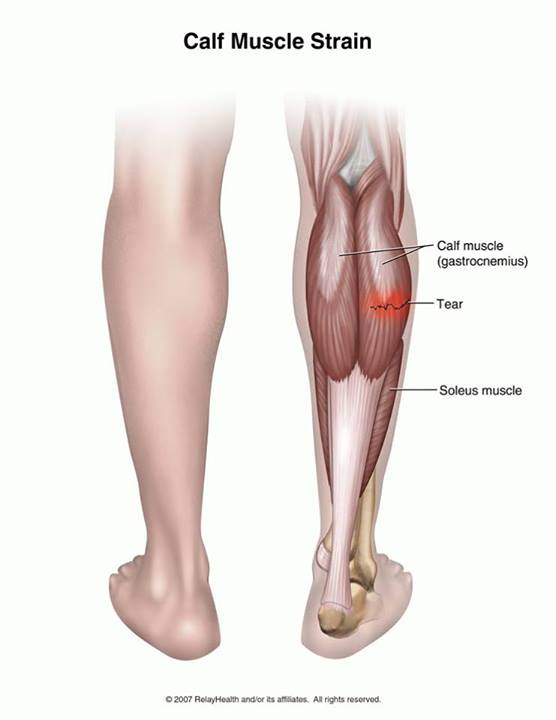Hoffa’s Disease
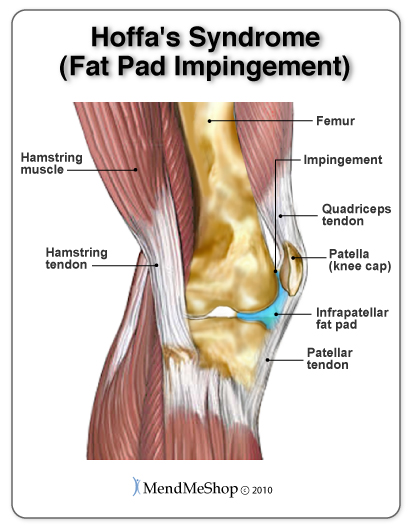
Hoffas’s disease is also known as Infrapatellar fat pad syndrome.
It involves pain below the kneecap(patella) due to the thigh bone(femur) and shinbone(tibia) pinching fatty tissue below the patella.The fat pad is meant to protect the patella from injury.
Hoffa’s Syndrome is a condition in which the infrapatellar fat pad either suffers a contusion or an injury, resulting in damage and swelling. This can lead to the Hoffa’s pad becoming trapped between the femur and the patella every time the leg is extended.
Fat pad impingement can also occur if the fat pad is pinched when the leg turns inward abnormally while running. The risk of this happening increases if you have instability in your knees or hips which can be a result of other conditions such as Achilles injuries. When favouring a sore Achilles tendon in one foot, you begin to use improper mechanics to walk or run and this can lead to unbalanced loads and over straining one of your knees and/or hips.
Because straightening the leg will cause the fat pad to become trapped, it is being re-injured constantly and can lead to a significant recovery time if not treated quickly and correctly.
Symptoms of Hoffa’s disease
- Pain below the patella
- Pain that gets worse with physical activity,including sports or when comppletely straightening the knee
swelling of the knee - Tenderness and swelling on either side of the tendon connecting the kneecap and shinbones.
Causes of Hoffa’s disease
- People participating in activities or sports where a blow to the knee is possible such as football, rugby, soccer, and hockey.
- If you have suffered an anterior cruciate ligament (ACL) injury the stability of your knee decreases leaving the infrapatellar fat pad more prone to being pinched.
- Runners with excessive pronation (also known as flat feet) or weak hips may experience quick leg turns inward while the knee cap (patella) remains behind, causing the fat pad to be pinched.
- People who have Iliotibial (IT) Band Syndrome.
- Anyone who has a history of hyperextension in the knee
Prevention of Hoffa’s disease
- Warmup and stretch properly before activity
- Maintain physical fitness
- Cardiovascular fitness
- Wear properly fitted and padded knee protection
- Allow complete recovery before returning to sports
Hoffa’s Syndrome Test
Your doctor or health care professional will examine your knee to determine if you have Hoffa’s Syndrome (fat pad impingement). He/she will ask you to lie down with a bent knee. You then slowly straighten your leg while the doctor presses his or her fingers below the knee cap (patella), on either side of the patellar tendon. Any pain or hesitation when straightening the leg is considered a positive test for Hoffa’s Syndrome.
Physiotherapy of Hoffa’s disease
Cold Compression Therapy
Using cold compression immediately following an injury reduces pain, swelling, and tissue damage that occurs when you have Hoffa’s Syndrome (fat pad impingement).
The Knee Freezie Wrap allows you to treat your knee in an effective and convenient way to rid yourself of the pain of Hoffa’s Syndrome at the front of your knee.

Cold Compression Therapy works by interrupting and slowing nerve and cell function in the damaged area. This is important because once blood vessels are damaged, they can no longer carry oxygenated blood to the infrapatellar fat pad and patella tendon and tissue cells begin to break-down.
The deep cold provided by the Knee Freezie Wrap slows cell function thereby reducing cellular break-down. Furthermore, because the cold wrap serve to numb the nerves, the wrap also reduces pain! The Knee Freezie Wrap uses a deep cold gel pack with a medical-grade neoprene compression cover to keep the ice off the skin preventing cryoburn and surrounding your knee cap with soothing cold.
Electrotherapy sucha as ultrasound and TENS
Muscle strengthening
Muscle strengthening exercises to maintain the strength and fitness of surrounding muscle groups sholud be done as pain allows.
Blood Flow Stimulation Therapy
After the inflammation and swelling behind your knee cap and around your patellar tendon is gone, you can begin to treat your entire knee with Blood Flow Stimulation Therapy, or BFST. BFST increases the amount of blood that flows naturally to your knee to nourish your fat pad, meniscal cartilage, tendons, ligaments and muscles to speed healing.

By treating yourself with Blood Flow Stimulation Therapy you can increase your body’s blood supply to the knee and your body’s natural healing power. In addition, the fresh blood flow whisks away dead cells and toxins that have built up from the tissue damage of Hoffa’s Syndrome leaving the area clean and able to heal faster. Our Knee Inferno Wrap provides the most effective, non-invasive, non-addictive pain relief and healing with no side effects.
During your recovery, you will probably have to modify and/or eliminate any activities that cause pain or discomfort in your knee until your pain and inflammation settle. Taking the time to care for your knee properly will have your knee back to normal faster and allow you to get back to the activities you enjoy.
With these 3 easy therapies you will notice incredible results in your knee. The more diligent you are with your treatment and rehabilitation, the faster you will see successful results!
We recommend that you consult your doctor and/or physiotherapist before using any of our outstanding products, to make sure they’re right for you and your condition.
Taping
Taping the patella is known to be highly effective in fat pad impingement.

